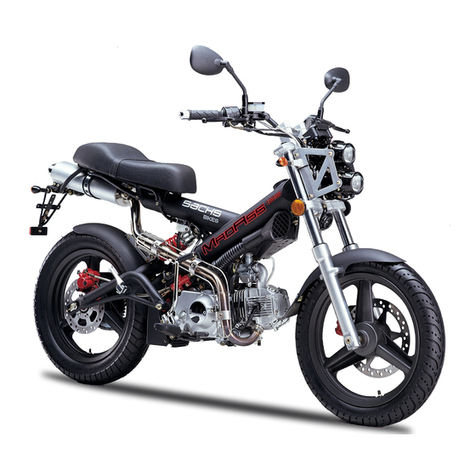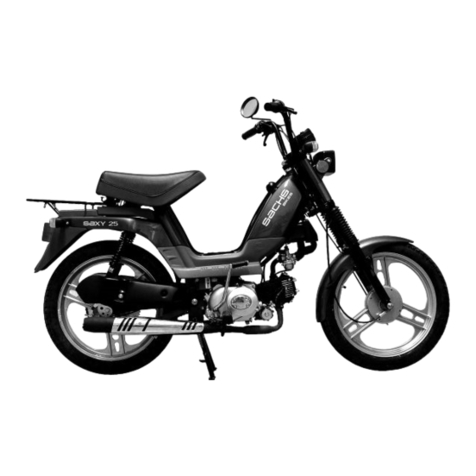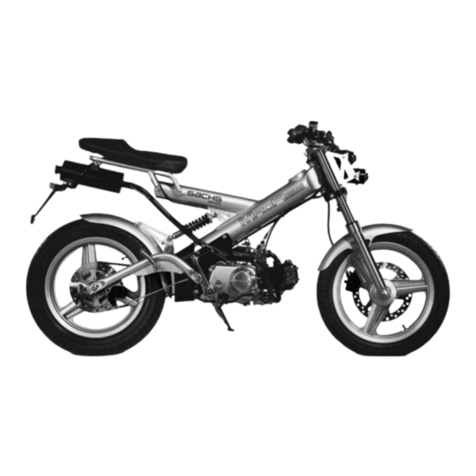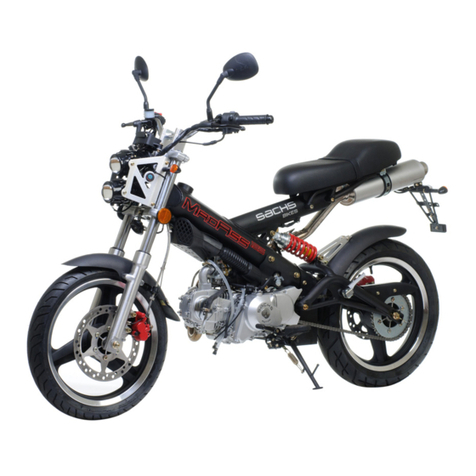1
CONTENTS
Summary and operation
Safety symbols .......................................................................... 3
Right-hand side view ................................................................. 4
Engine ....................................................................................... 5
Left-hand handlebar fittings....................................................... 6
Right-hand handlebar fittings..................................................... 6
Choke ........................................................................................ 6
Ignition lock................................................................................ 7
Cockpit....................................................................................... 8
Speedometer set-up, time adjustment....................................... 8
Speedometer battery change.................................................... 9
Safety test
Checklist .................................................................................. 10
Clutch ...................................................................................... 11
Fuel..................................................................................... 12-13
Engine oil............................................................................ 14-15
Front brake .............................................................................. 16
Rear brake............................................................................... 17
Drive chain............................................................................... 18
Tyre profile, tyre pressure and size.......................................... 19
Load / lights ............................................................................. 20
Riding instructions
Ride safely............................................................................... 21
Ride economically and be aware of the environment......... 22-23
Running-in instructions............................................................ 24
Side stand................................................................................ 25
Starting.................................................................................... 26
Starting with kick starter lever.................................................. 27
Starting withelectric starter...................................................... 28
Riding, changing gears............................................................ 29
Braking ............................................................................... 30-31
Stopping the engine / fork-column lock ................................... 32
Service instructions
Servicing the motorbike / cleaning agents.......................... 33-34
Operation in winter and anti-corrosion protection.................... 35
Repairing paint damage / servicing the tyres .......................... 36
Lay-up / commission................................................................ 37
Technical changes, accessories and spare parts.................... 38

































